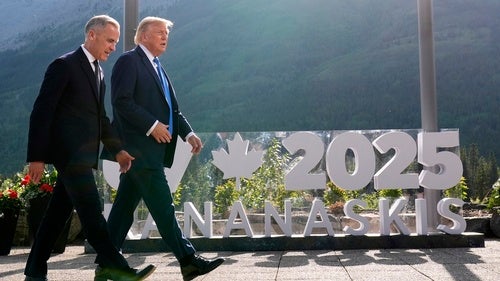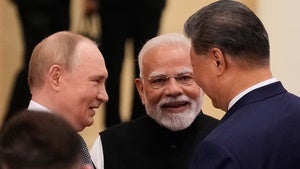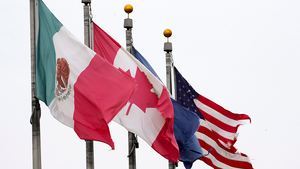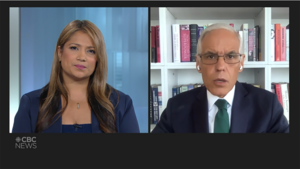What Trump's View of Canada Reveals About His Foreign Policy Doctrine

From tariffs to talks of annexation, Trump’s approach to Canada is rooted in his transactional mindset and nostalgia for an era of economic nationalism and territorial expansion.
President Donald Trump's decision to suspend trade negotiations with Canada raises once again a pressing question: Why does Trump hate Canada? Perhaps "hate" is too strong of a word. But from posting on social media that "CANADA CHEATED AND GOT CAUGHT!!!" to time and again asserting in a joke-not-a-joke manner that Canada should become the 51st state, he is clearly annoyed with the United States' northern neighbor.
Trump’s views on Canada likely originate not from personal animus or geostrategic thinking, but from two core features of Trump’s general approach to foreign policy.
First, Trump has a transactional mindset to foreign policy that leads him to despise free-riding. This has long been a characteristic of Trump, as captured in his New York Times full-page ad back in 1987, where he asserted that a “little backbone” could address how the rest of the world was taking advantage of the United States. Though he directed most of his ire at the time toward Japan—likely because he was caught up in the anti-Japanese sentiment of the 1980s—his core complaint was that foreign nations were exploiting the United States economically and "taking advantage” of the country in the realm of security.
Despite or perhaps because they are large trading partners, the United States and Canada have a long history of contentious trade issues, particularly around US claims that Canada illegally subsidizes its lumber industry. But while the recent conflicts prompted by Trump’s tariffs have garnered much attention, Canada remains the only G7 nation to have reached a new trade deal with the United States.
With respect to security, Canada does not so much free-ride on US protection. Since 1958, military personnel from the United States and Canada have monitored and protected North American airspace as part of the North American Aerospace Defense Command (NORAD), the largest combined binational military command in the world. Such an arrangement has long made sense as Canada separates the contiguous United States from Alaska. An exchange of nuclear weapons would likely go over the Arctic Circle, meaning warheads destined for the United States would first enter Canadian airspace.
"Whether drawn from a transactional view of world politics or a desire to go back to the 19th century, Trump is far from viewing Canada as the United States' closest friend and ally."
Perhaps as a consequence of Canada being under the US security umbrella, Canada has long been delinquent when it comes to providing for its own defense, according to statements from Canadian officials. The country spent around 1 percent of its GDP on defense in 2024 and was far from meeting its NATO commitment of spending 2 percent of its GDP on defense and 20 percent of its defense budget on equipment. Within this context, it makes sense that Trump’s transactional worldview would lead him to view Canada as a liability and nuisance.
But Trump’s view of Canada as a state to be bullied or even annexed possibly runs further, and this leads to the second core feature of Trump’s general approach to foreign policy: His 19th-century view of the United States and its role in the world. This is not meant as a figurative statement. He has been explicit in stating that the United States was its wealthiest and most prosperous at the end of the 19th century and beginning of the 20th century. It’s the period that serves as the “again” in his “Make America Great Again” campaign. As he remarked during his second inaugural address in January, the US “will once again consider itself a growing nation—one that increases our wealth, expands our territory.”
Following from that view, Trump thinks the United States should go back to the policies of that time, which included high tariffs and territorial acquisition. From a 19th century perspective, it makes complete sense for Trump to see the presence of a sovereign and independent nation that impedes the United States’ ability to expand territorially as, at best, a nuisance or, at worst, a threat. Indeed, the United States had a series of territorial and maritime disputes with Canada throughout the 19th century when it was an autonomous region of the British Empire, and these were not fully settled until the early 20th century through agreements such as the 1909 Boundary Waters Treaty.
Whether drawn from a transactional view of world politics or a desire to go back to the 19th century, Trump is far from viewing Canada as the United States' closest friend and ally. This was evident in his first term and has become fully evident in his second term. His view of the country will not only continue to complicate critical diplomatic relations between the two nations, but due to the economic disruptions and negative sentiments it generates among the public, the lives of regular citizens who rely on those relations as well.


Related Content

Join us for a conversation with Michael Froman and Raghuram Rajan, moderated by Leslie Vinjamuri, as they examine how President Trump's policies and recent BRICS diplomacy are reshaping global trade dynamics.

Heather Hurlburt, Eric Miller, Orlando Pérez Gárate, and Robert Gulotty discuss the 2026 review of the United States-Mexico-Canada Agreement (USMCA) and its potential impact on the future of North American economic cooperation.
